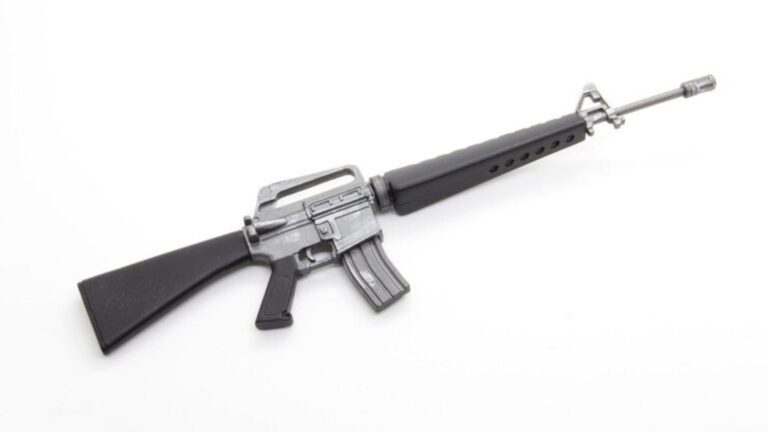The 6.2mm Jap Arisaka rifle is more than just a firearm; it is a significant piece of military history that reflects Japan’s advancements in weaponry during the early 20th century. This article delves into the origins, design, variants, and historical significance of the Arisaka rifle, along with practical considerations for collectors and enthusiasts.
Origins of the Arisaka Rifle
The Arisaka rifle was developed in the late 19th century, with its roots tracing back to Japan’s modernization efforts during the Meiji Restoration. The need for a more effective infantry weapon led to the adoption of various Western firearms. The 6.2mm caliber was eventually chosen for its balance between firepower and manageable recoil.
Development Timeline
1897: The Type 30 rifle was introduced, featuring a bolt-action mechanism and chambered in 6.5mm.
1905: The Type 38 rifle emerged, with improvements in accuracy and reliability, further solidifying Japan’s commitment to enhancing its military capabilities.
1939: The Type 99 rifle, chambered in 7.7mm, became the standard infantry rifle, but the legacy of the 6.2mm variant persisted.
Design Features of the 6.2mm Arisaka Rifle
The 6.2mm Arisaka rifle exhibits several design features that contributed to its effectiveness in the field.
Bolt-Action Mechanism
The bolt-action design allows for rapid cycling of rounds, providing a reliable and efficient shooting experience. This mechanism, while simple, was robust enough to withstand the rigors of combat.
Sights and Accuracy
Equipped with iron sights, the Arisaka rifle offered impressive accuracy for its time. The design prioritized long-range engagement, making it suitable for various combat scenarios.
Build Quality
The materials used in the Arisaka rifle construction were of high quality, featuring hardwood stocks and durable metal components. This ensured longevity and resilience, essential for military use.
Historical Significance
The Arisaka rifle played a crucial role in numerous conflicts, particularly during World War II. Its impact on the battlefield and its representation of Japanese military strategy cannot be understated.
Role in World War II
The Arisaka was a standard issue for Japanese soldiers during the war, proving effective in both offensive and defensive operations. The rifle’s reliability in harsh conditions made it a favored choice among troops.
Cultural Impact
Beyond its military use, the Arisaka rifle has become a symbol of Japan’s historical military prowess. Collectors and historians appreciate it not only for its functionality but also for its place in the narrative of global military history.
Variants of the Arisaka Rifle
Over the years, several variants of the Arisaka rifle were produced, each with its unique characteristics.
Type 30
The Type 30 was the first standard rifle of the Imperial Japanese Army. It featured a distinctive design and was chambered for the 6.5mm cartridge, making it lightweight and easy to handle.
Type 38
The Type 38 introduced improvements in terms of sighting and overall design. It became known for its accuracy and was used extensively during the Second Sino-Japanese War.
Type 99
Though primarily chambered in 7.7mm, the Type 99 is often discussed in relation to the Arisaka family due to its evolution from earlier models. It represented a shift in military needs during World War II.
Collecting the Arisaka Rifle
For firearm collectors, the Arisaka rifle presents a fascinating opportunity. Here are some key considerations for those interested in adding this historical firearm to their collection.
Authenticity
When purchasing an Arisaka rifle, verifying authenticity is crucial. Look for serial numbers, markings, and the condition of the firearm. Authentic pieces are often valued higher and can appreciate over time.
Restoration and Maintenance
Collectors should be aware of the importance of proper maintenance and, if needed, restoration. Original parts can enhance the value of the rifle, so it’s essential to source components from reputable dealers.
Legal Considerations
Before acquiring an Arisaka rifle, familiarize yourself with local laws regarding firearm ownership. Compliance with regulations is vital to ensure a smooth collecting experience.
Conclusion
The 6.2mm Jap Arisaka rifle is a remarkable testament to Japan’s military history and engineering ingenuity. Its legacy continues to resonate with collectors, historians, and firearm enthusiasts alike. Understanding its origins, design, and impact on warfare allows for a deeper appreciation of this iconic firearm.
ALSO READ:Eastwind 51: Unleashing Innovation In [Your Industry/Field]
FAQs
What is the Arisaka rifle known for?
The Arisaka rifle is known for its reliability, accuracy, and historical significance as a standard infantry weapon for the Imperial Japanese Army, particularly during World War II.
How many variants of the Arisaka rifle are there?
There are several variants of the Arisaka rifle, including the Type 30, Type 38, and Type 99, each with unique features and historical contexts.
Is the Arisaka rifle still in use today?
While no longer in active military service, the Arisaka rifle is still appreciated by collectors and firearm enthusiasts around the world for its historical value and craftsmanship.
What caliber is the Arisaka rifle?
The original Arisaka rifles were chambered in 6.5mm, while later variants, such as the Type 99, were chambered in 7.7mm. The 6.2mm designation often refers to specific discussions around earlier models.
Where can I find an Arisaka rifle for sale?
Arisaka rifles can often be found at firearm shows, antique shops, or through online auction sites. Ensure to purchase from reputable sources to guarantee authenticity and legality.

